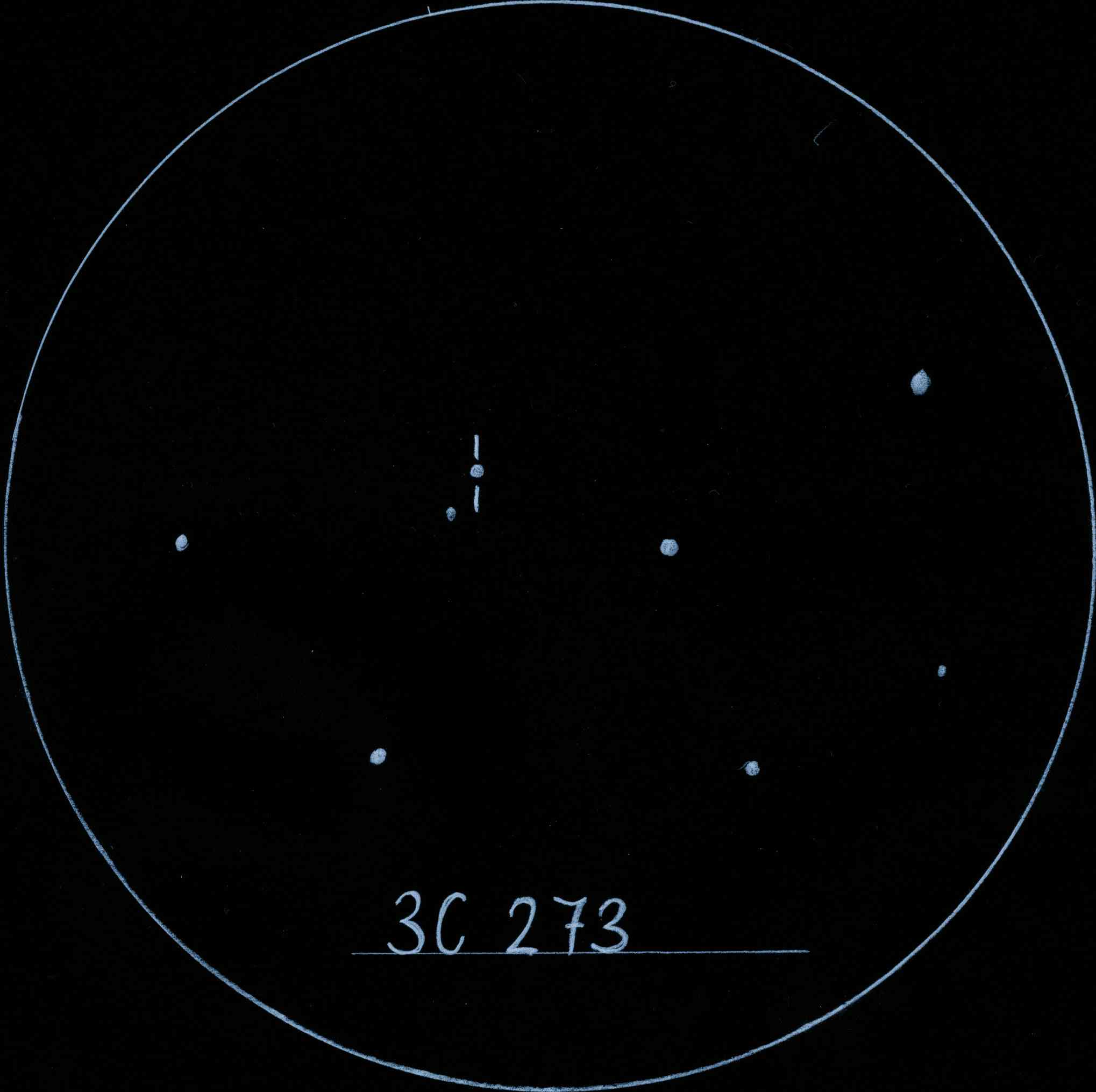Copyright 2008 Starry Mirror



The
TM
Astronomy From West Virginia
OBSERVING QUASAR 3C 273 ON A COLD FEBRUARY MORNING - FEBRUARY 1, 2009
BRIDGEPORT, WV (S-M) - The wind blew through the slit on our observatory dome this morning, shaking the telescope and causing the object we were viewing to disappear until the palm of a hand was placed on the instrument's tube, calming it. The little star-like object was so dim that it could only be seen when conditions were perfectly still, and though it was not much to look at, I could not help but be impressed by it, for it had taken the light from the object more than two billion years to reach my telescope.
I first considered looking at the object, quasar 3C 273, yesterday morning, when I realized its location was above the trees on these winter mornings. This started me to thinking about just how far away the object is.
In the sky, 3C 273 appears to be near the Virgo cluster of galaxies, but it is in fact much more distant. The photons my
telescope gathered and which my eyes detected this morning left the quasar long before dinosaurs walked on Earth. About the time the dinosaurs were becoming extinct, the photons were just then passing the Virgo cluster, and as that was only 60 million years ago, the light had already made much of its long journey.

3C 273 appears as a faint star in a telescope. It is indicated with tick marks. The brightest star shown is only magnitude 10.
When I made a trip to the post office at midnight, a few hours before I spotted the quasar, the little photons were out beyond Pluto, and were just entering the Solar System. Even as I checked the star charts to find the object's location, I knew that the photons which I would "see" were passing Saturn, which is currently just a little to the west of 3C 273's location. After the photons were gathered by the telescope and directed into the retina of my eye, they were converted into electrical impluses by nerve cells, and their journey of billions of years was over.
3C 273 may look dim in our ten inch telescope, but that is only because it is so distant. The exact distance is believed to be around 2.4 billion light years, and the object shines with the energy of two trillion Suns. Quasars, or quasi-stellar objects, are the active nuclei of distant galaxies. When first discovered, the true nature of the objects was unknown. While they appeared like stars, their spectra were odd, but the shift of the spectra toward the red seemed to indicate that the objects lay at a great distance. Quasars have been found to be emitters across the spectrum, from X-rays to radio, and newer techniques have made it possible to resolve details of their home galaxies. 3C 273 has a large jet emanating from it, and the jet is so enormous that we could easily see it in our telescope, if it were not dim and lost in the glare of the quasar.
3C 273 is just about the most distant object we will ever have a chance to actually see with our own eyes. We measured the magnitude of 3C 273 as 12.7 on Saturday morning, just barely bright enough to be seen through our ten inch telescope. There are at least 100,000 quasars known, but the rest are all even dimmer. - GW